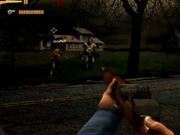Seamless Navigation Through Ultra Low Frequency
Finally, a solution that allows accurate indoor navigation with existing smartphones! ULF-MC will enable you to navigate indoors and receive location-based information relevant to you and your friends. It is as easy as using satellite-based navigation today. By extending outdoor navigation systems with simple, low-cost infrastructure for indoor areas, ULF-MC provides you with exact positions and related information via modulated magnetic fields and the mobile internet. The system is based on relative location IDs that are transferred to absolute positions involving the last GNSS fix. This technology has been designed for use on existing smartphones through utilisation of their threeaxis hall sensors (electronic compasses).
ULF-MC's primary application areas include:
• Indoor navigation
• Mobile payment apps for POS & ATM
• Individualised advertising
Though designed for indoor use by humans, ULF-MC can also be used to extend the reach of GNSS to tunnels for car navigation or to increase outdoor accuracy related to points of interest (e.g. for blind people). A demo has already been developed and tested at Fraunhofer AICOS. A patent is pending in Europe and the United States.
ULF-MC is a technology award winner of the Galileo Master prize at the European Sattelite Navigation 2012 edition (highest distinction).
The 'Associação Fraunhofer Portugal Research' (FhP) is a non-profit, private, collective association that detains and actively manages research institutions.
FhP detains and operates FhP-AICOS, an applied research center in the area of Information and Communication Technologies (ICT), with a particular focus on Ambient Assisted Living (AAL) and Information and Communication Technologies for Development (ICT4D).



















